GAS MASKS AND ASSOCIATED EQUIPMENT.
|
The MK.1V general service respirator was introduced in 1926 it was found to have several drawbacks .
There were only three sizes, glasses could not be worn underneath and they could not communicate with microphones.
The MK.1V Special T Mic was introduced which had four sizes and they could were glasses underneath also it had a moulded area on the left cheek that was designed for a microphone adaptor to connect into.[see pictures]. |
MK.V service gas mask with a MK.V11 bag both dated 1941.
Introduced in 1939 the MK.V is basically an amalgamation of all the improvements in the evolutions of the Mk.1V. |
The Mk IVa Long Hose GSR was developed for use by the Royal Navy, RAF and gunners
of the Royal Artillery, whose duties could be hindered by wearing the respirator haversack high on the chest.
The longer breather hose allowed the haversack to be worn on the hip. |
Light pattern anti-gas respirator and bag introduced in early 1943 originally
designed to go with the pattern 1944 webbing it would eventually replace the MK.V general service gas mask.
This one is dated 1944.
The second light pattern anti-gas respirator shown has a different exhale valve that protrude' s out so a
microphone could be attached .
This one is dated 1943.Note the cork in the canister on the first mask.
This had a tape attached to it and another cork at the other end so both ends of the canister could be blocked when
not in use. |
Haversack MK.V . Introduced in the early 30s. It has a single flap opening at the
top with press stud fastenings at each corner, just below the right hand press stud on the main body sewn into the
lining is a length of string or whipcord which goes through the sling and around the chest when worn in the alert
position then tied off on the small d-links located half way down the main body of the haversack, on the bottom
are three metal drain vents, there are three internal compartments also there is a loop of cloth sown inside the bag
on the bottom left for the anti-dimming tube, it has two large metal de-links at the top for the carrying strap to
attach to, the strap is threaded through one D-ring then attached to the other one by a flat hook and it also has
the small S shaped hook on this de-link to attach to the tab in the middle of the strap when worn in the alert
position.
I have come across one interesting variation on what must be a very early MK.V bag a metal spring at the bottom of
the bag to protect the canister if the bag was dropped,These were removed when the type A canisters were replaced by
the type D and E canisters. [see sixth picture]. |
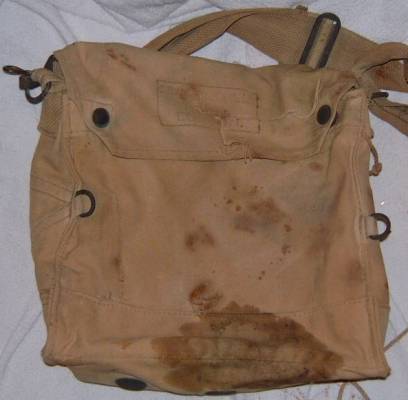 |
 |
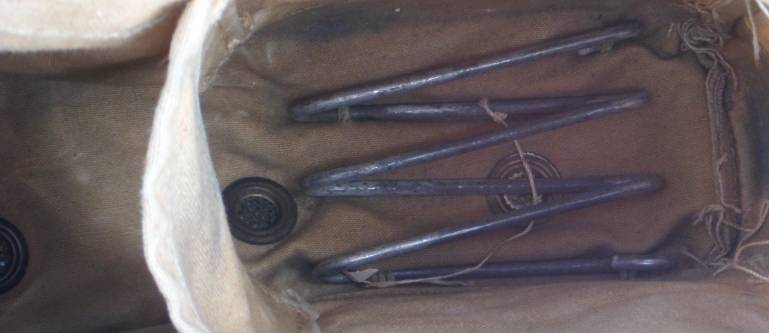 |
 |
Haversack MK.V-C and MK.V1. When the anti-gas eye shields and anti-gas ointments
were introduced in 1939 more pockets were needed as a interim measure another bag with two pockets was sewn onto the
MK.V and it was given a new designation the MK.V-C for converted, around the same time a new mark of bag was
introduced the MK.V1 which incorporated the extra two pockets on the back with its own press studs and flap.
The next pictures are of the MK.V1. There was also a Haversack MK.Va and MK.V1a which was a
modified version of the Mk V and MKV1 Haversack just replacing the whipcord with a waist belt for wearing the
haversack on the hip. The belt was made from the same canvas as the haversack and used the same belt buckle as used
on the Pattern 1937 webbing belt. The belt clipped on to the brass hoops used originally for the whipcord.
The haversack and waist-belt combinations were only used with the Long Hose Mk Va GSR and hence mainly by the Navy
and RAF [see the last two pictures of the MK.V1 Haversack]. |
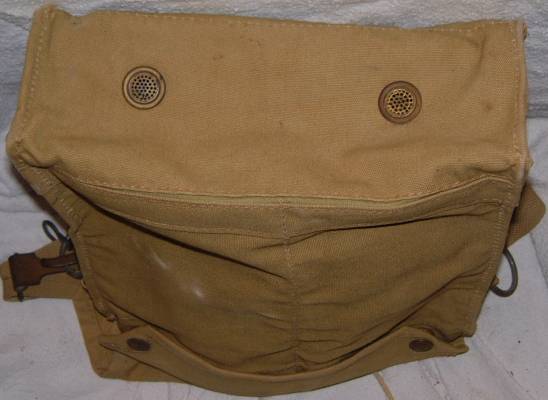 |
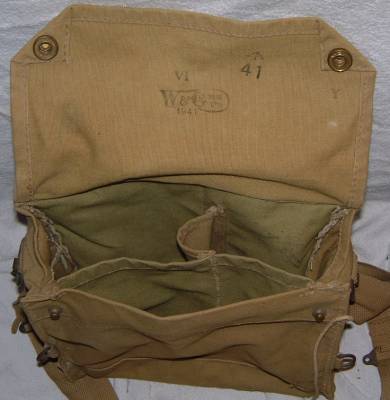 |
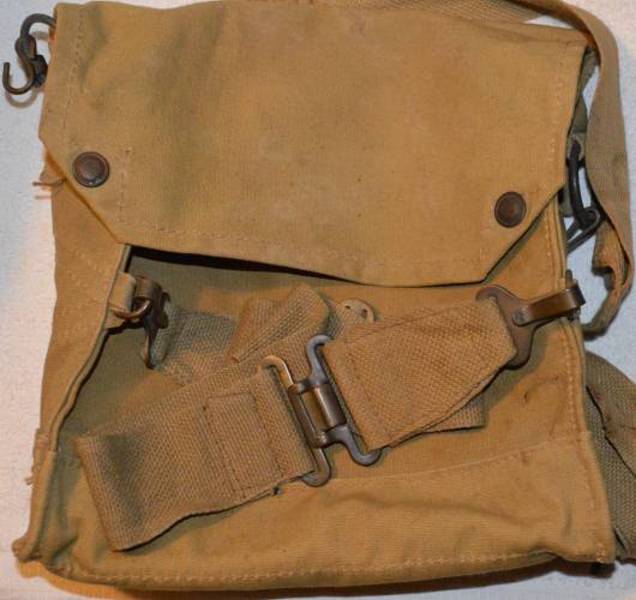 |
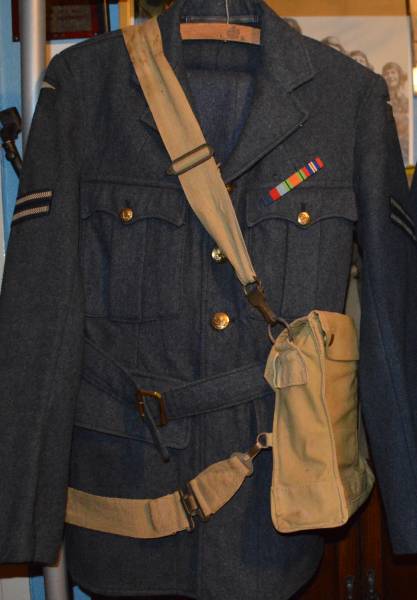 |
Haversack MK.V11 was introduced in 1941 in an effort to economize production all
the pockets are now internal under one flap with a small sixth pocket being added internally at the top to hold the
new pattern of anti-dimming tin with a small length of string attached the lid of the anti-dimming tin and sewn into
the lining of the small pocket the small d-links half way down the front the previous marks have gone and replaced
by a metal disc on the right hand side, the string sown into the liner on the MK.V11 is now on the bottom left also
there is a small outside pocket on the left side for the string, the flat hooks on the strap ends have also gone the
strap is now attached directly to the metal loops on the top of the bag and the small S hook and tab in the middle of
the strap it attaches to has also gone. |
The haversack in use. The haversack may be carried in ether the slung or the alert position . When in the slung position the haversack is on the left side of the body with the sling over the right shoulder. There are two ways to bring the haversack into the alert position. The standard method is as follows " swing haversack to front of body and bring left arm through sling so that haversack hangs straight down from neck. Undo press buttons with sharp pull. Raise haversack on to chest, allowing sling to fall down back. Withdraw whipcord from haversack pass through D-ring on right side of haversack, through the sling behind the back and fasten to D-ring on left side of haversack with a slip knot. Fold haversack flap over between haversack and body." in the alternative alert position to be used quickly in an emergency " the sling is shortened by engaging the tab on the sling with the S hook at the side of the haversack. The haversack then remains on the chest supported from the neck and is secured to the body by means of the whipcord". |
SR6 gas mask dated 1980 introduced in the 60s replacing the Light pattern anti-gas respirator.The bag is a Haversack NBC MK.11 dated 1977. |
The S10 developed in the late 1980s to replace the Sr6. This one's dated 1988 the Respirator haversack is dated 1994 .
It is equipped with a drinking tube and voice amplifier . The 40mm thread filter can be attached to either side of the face pieces.
|
Protective Dubbin number 1. It was used on boots in WW11 to create a waterproof seal to help prevent penetration from blister gas.
It was usually carried in the pattern 37 entrenching tool bag. |
Anti dust or anti gas eye shields.
Introduced in 1937 they were designed to protect the eyes from liquid gas but were authorized for use as anti dust goggles in 1943 .
There were three marks. Mk.1 has a two piece elastic headband and cloth around the egde also three of them were tinted like sun glasses.
The MK.11 has a one piece adjustable elastic headband also a pressed
edge around the celluloid for strength and a green strip of cloth across the top with a strip of
white cloth as backing as a sweatband.
The Mk.111 pattern was the same as the MK.11 except that the headband was only partially elasticised.
And the green cloth was replaced with a black one. There are six eye shields to a packet.
Anti gas ointment No 2 was first issued in screw top glass jars,
I have two different colours of glass jar as shown in the first picture but the lids are still the
same . The jars were changed to tins containing eight lead tubes in April 1939.
.
Anti gas ointment No 5 tin. Dated March 1943. |
Cover protective individual or Gas Cape dated December 1944. Never
used as Gas Capes but the soldier's found them very useful as rain capes. Still in its original
packaging I am dying to open it, but they were not very sturdy when they were made so I am thinking
leave well alone.
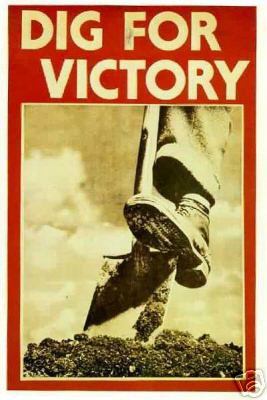 BACK TO MILITARIA EQUIPMENT. BACK TO MILITARIA EQUIPMENT. |



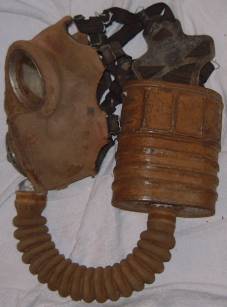
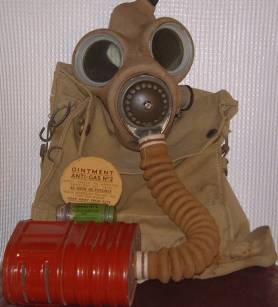


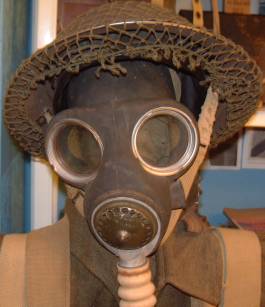
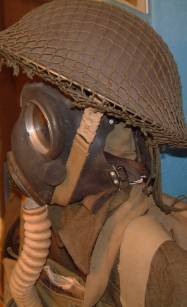

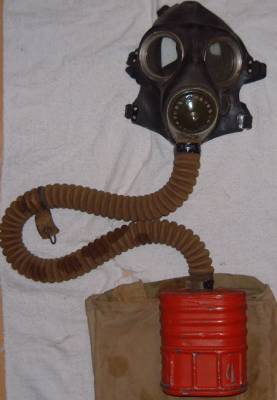
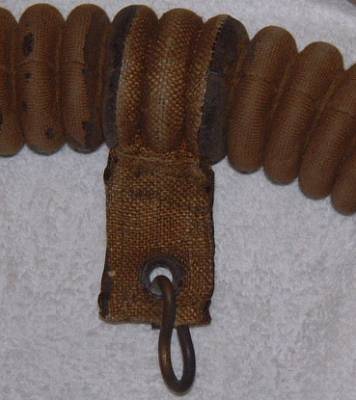
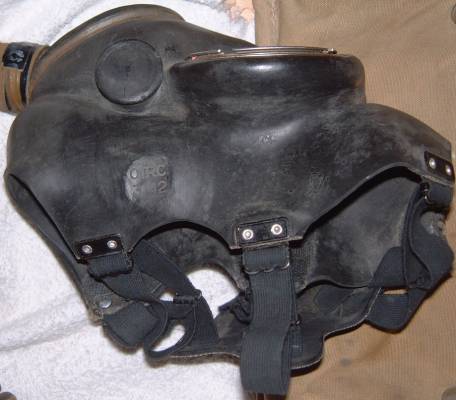


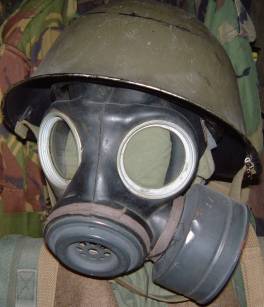
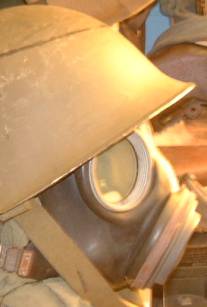
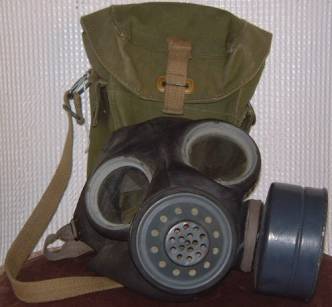
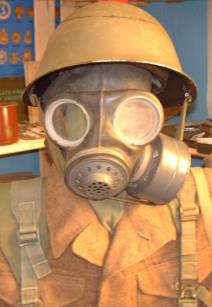
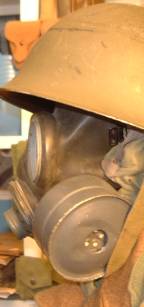
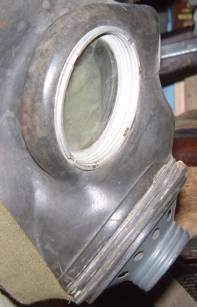



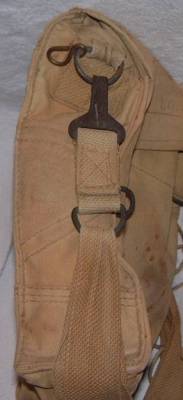
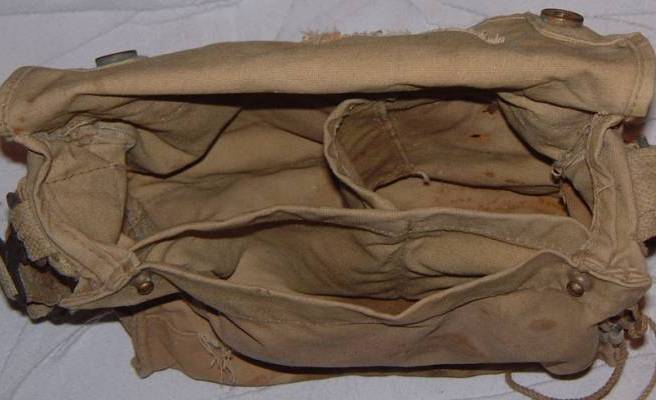


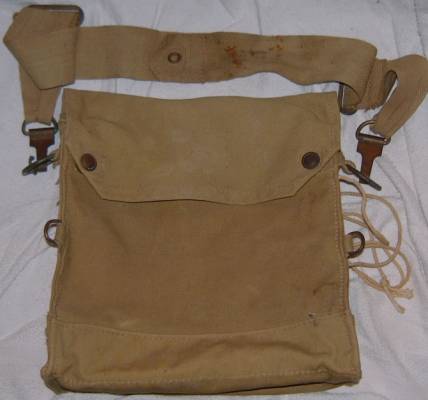
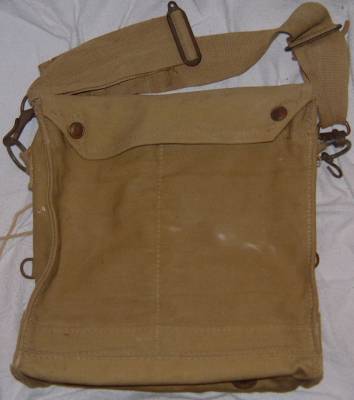





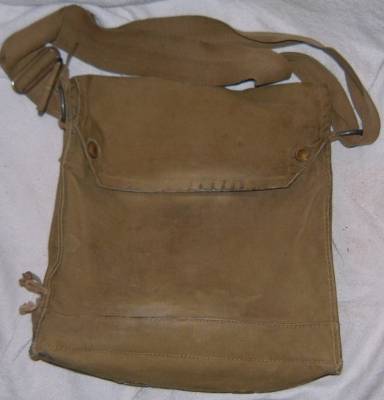
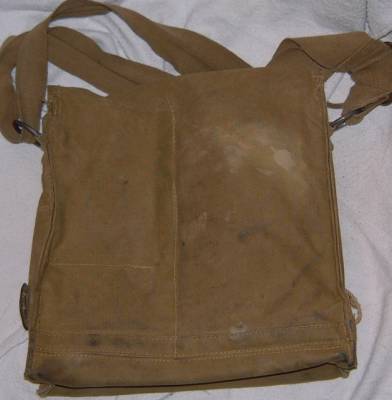
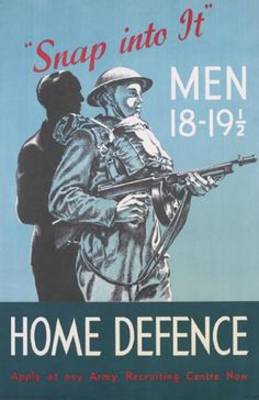
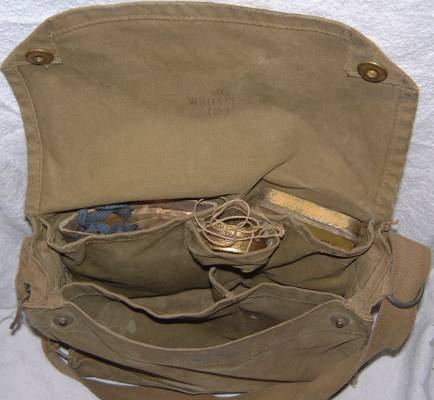

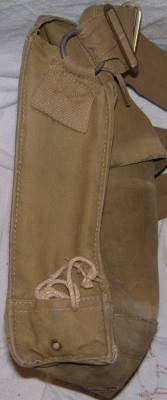
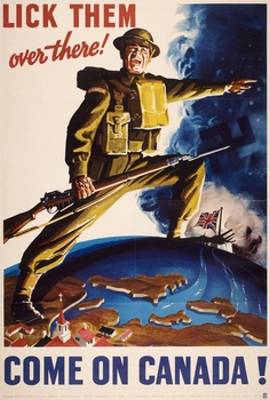
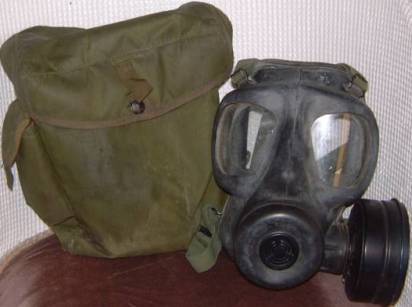
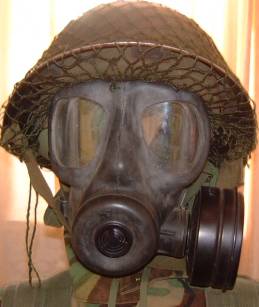
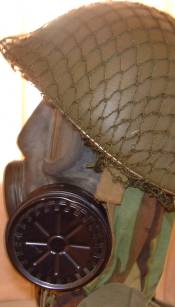
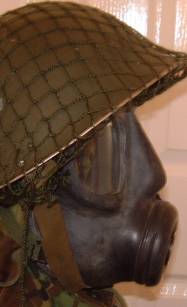

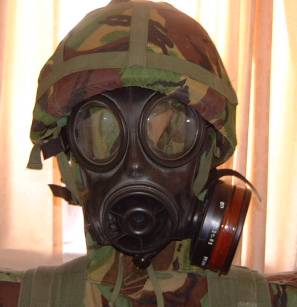
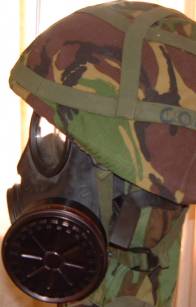
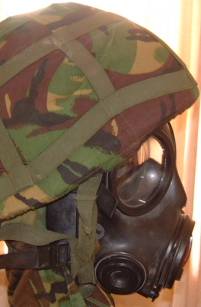
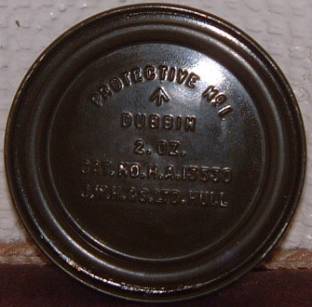

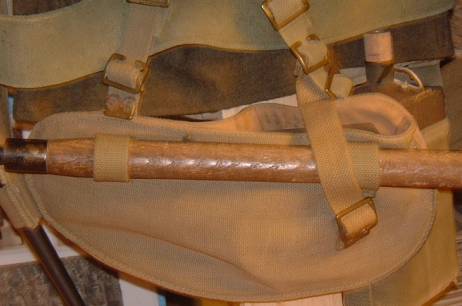
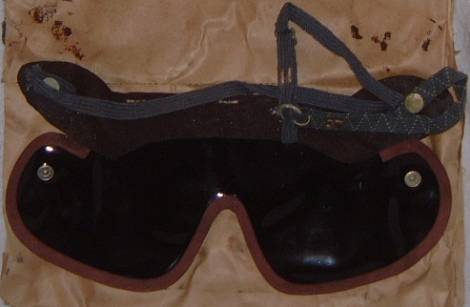
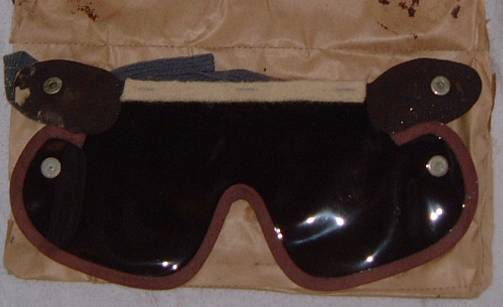
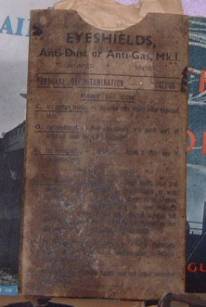
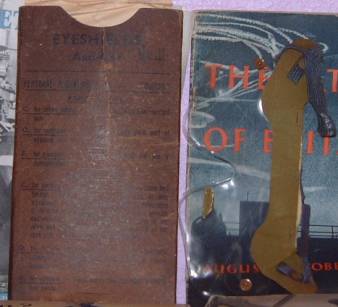
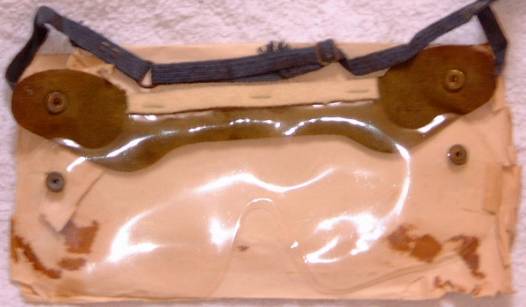
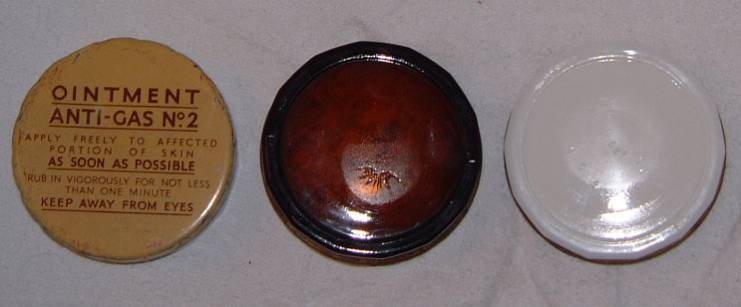
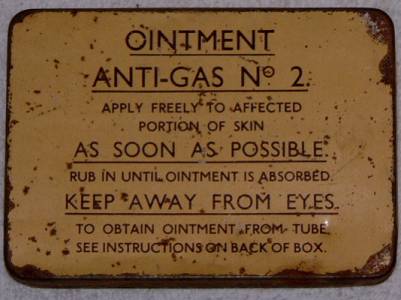
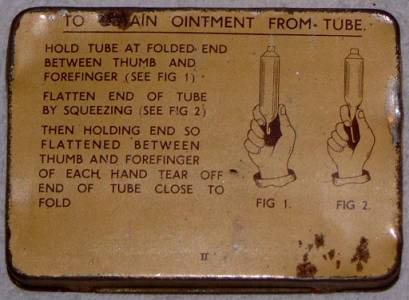
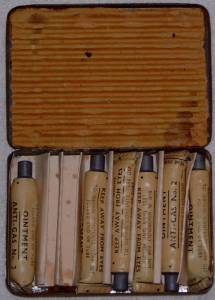
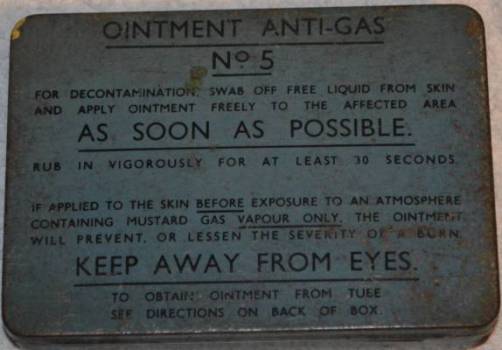
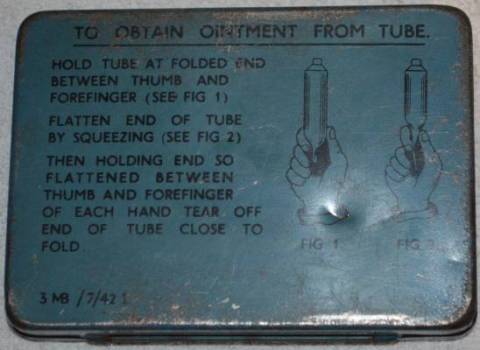
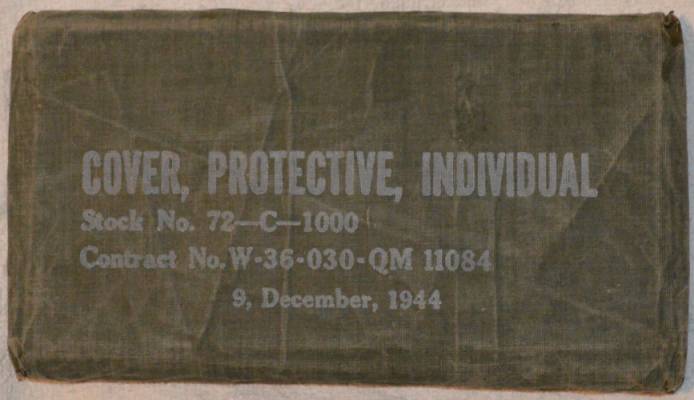
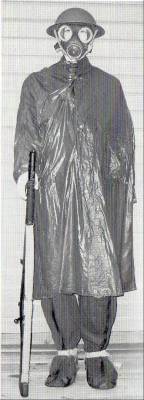
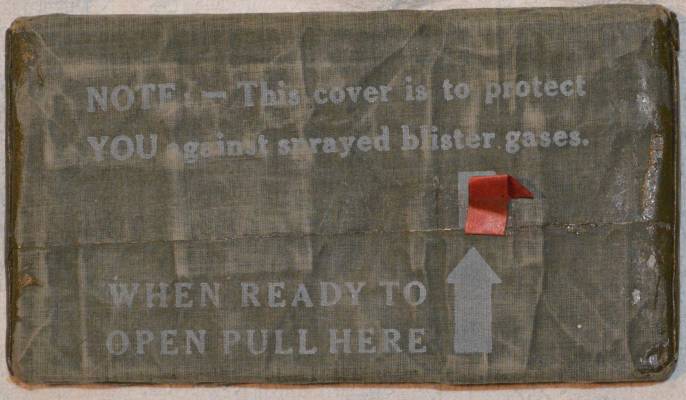

 BACK TO MILITARIA EQUIPMENT.
BACK TO MILITARIA EQUIPMENT.